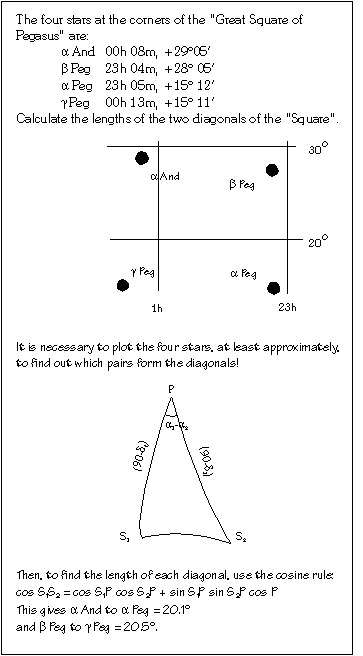

The first equatorial system (HA and declination) is still tied to the observer's here-and-now. Now we change the zero-point for our coordinates. We choose a fixed point on the celestial equator, called the vernal equinox, or the First Point of Aries.
The declination of object X measured in the same way as before. The Right Ascension or RA of object X is the angle along the celestial equator measured eastwards from the vernal equinox to the meridian of X. Like HA, RA is measured in hours 0-24h, but it goes in the opposite direction.
Comparison of these celestial coordinate systems with
the terrestrial system:
terrestrial
alt-az
HA/dec.
RA/dec.
equator
horizon
celestial
equator
celestial equator
North Pole
zenith
North
Celestial Pole North Celestial Pole
South Pole
nadir
South Celestial Pole South Celestial Pole
latitude
altitude
declination
declination
parallel of latitude parallel
of altitude parallel of declination parallel of declination
co-latitude
zenith
distance
North Polar distance North
Polar distance
meridian of longitude vertical circle
meridian
meridian
Greenwich Meridian Principal Vertical
celestial meridian
celestial meridian
longitude
azimuth
Hour Angle
Right
Ascension

The Right Ascension and declination of an object do not normally change over short periods of time; the Hour Angle changes constantly with time. Consequently we have to find a way of defining the time.
Return to index.